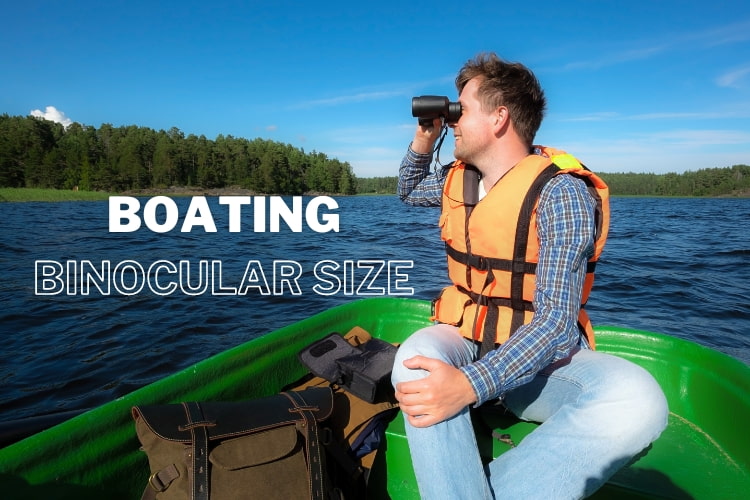What Size Binoculars Do You Need for Boating? Tips and Recommendations

I bet that you make sure you are carrying your binoculars for boating and marine activities. They allow you to see distant objects clearly, such as buoys, landmarks, wildlife, and other boats. But how do you choose the right size binoculars for boating? What factors should you consider when buying binoculars for boating?
The size of binoculars is determined by two numbers: the magnification and the objective lens size. For example, 7×50 binoculars have 7x magnification and 50mm objective lens size.
The magnification is the number of times the binoculars make an object appear closer than it is. The higher the magnification, the more details and clarity you can see, but also the more image shake and distortion you may experience due to boat movement.
What Size Binoculars are Best for Boating? 7×50 Binoculars
7×50 binoculars are considered the best size for boating by many experts and enthusiasts. And why not? They are a balanced combination of magnification, objective lens size, exit pupil size, and field of view that makes them ideal for marine environments.
So let’s take a look at the advantages of 7×50 binoculars for boating to see if they actually justify to be the best:
- Conservative magnification that reduces image shake and distortion caused by boat movement
- Large objective lens size that allows more light to enter and produces brighter images in low-light conditions
- Generous exit pupil size that matches the human eye’s pupil size in dim light and provides a comfortable viewing experience
- Wide field of view that enables easy tracking of moving objects and scanning of large areas
Some examples of 7×50 binoculars that are suitable for boating are:
- Nikon OceanPro 7×50 Binoculars: waterproof, fog proof, rubber-armored, built-in compass and reticle
- Steiner Navigator Pro 7×50 Binoculars: waterproof, fog proof, shock-resistant, auto-focus, high-contrast optics
- Celestron Oceana 7×50 Porro Prism Binoculars: waterproof, fog proof, rubberized armor coating, wide-angle view, built-in compass and reticle
Considerations for choosing binoculars include exit pupil size, which is the light beam diameter exiting the eyepiece (calculated by dividing objective lens size by magnification, e.g., 7×50 = 7.14mm). A larger exit pupil enhances brightness and viewing comfort, matching your eye’s pupil size (about 5-7mm) in dim light.
How do we measure FoV? Field of view, measured in degrees or feet at 1000 yards, determines the visible width. Wider fields ease tracking and scanning. Other factors like image stabilization, waterproofing, fog proofing, and durability are vital for boating.
The number on binoculars defines a lot of use cases for different binoculars. For example: the ideal size of binoculars for elk hunting typically ranges between 8×42 and 10×42. These are also the best size binoculars for bow hunting
So it’s safe to say that the Classic 7×50 binoculars are popular, but various sizes cater to different needs. Let’s check each option.
Other Sizes of Binoculars: Pros and Cons
Other sizes of binoculars may also work for boating, depending on your needs and preferences. Some people may prefer higher magnification or smaller objective lens size for various reasons. However, there are also trade-offs to consider when choosing other sizes.
The pros and cons of some alternative sizes are:
- 8×42 Binoculars: higher magnification that provides more details and clarity, but also more image shake and narrower field of view; smaller objective lens size that reduces weight and bulkiness, but also lowers light transmission and brightness; smaller exit pupil size that may cause eye strain in low-light conditions
- 10×30 Binoculars: higher magnification that offers more details and clarity, but also more image shake and narrower field of view; smaller objective lens size that reduces weight and bulkiness, but also lowers light transmission and brightness; smaller exit pupil size that may cause eye strain in low-light conditions; image stabilization feature that compensates for boat movement and enhances image quality
Conclusion
Choosing the right size binoculars for boating is not a simple task. There are many factors to consider and many options to choose from. The best size for boating depends on your personal needs and preferences.
However, as a general rule of thumb, 7×50 binoculars are the best size for boating for most users. They offer a balanced combination of magnification, objective lens size, exit pupil size, and field of view that makes them ideal for marine environments.
